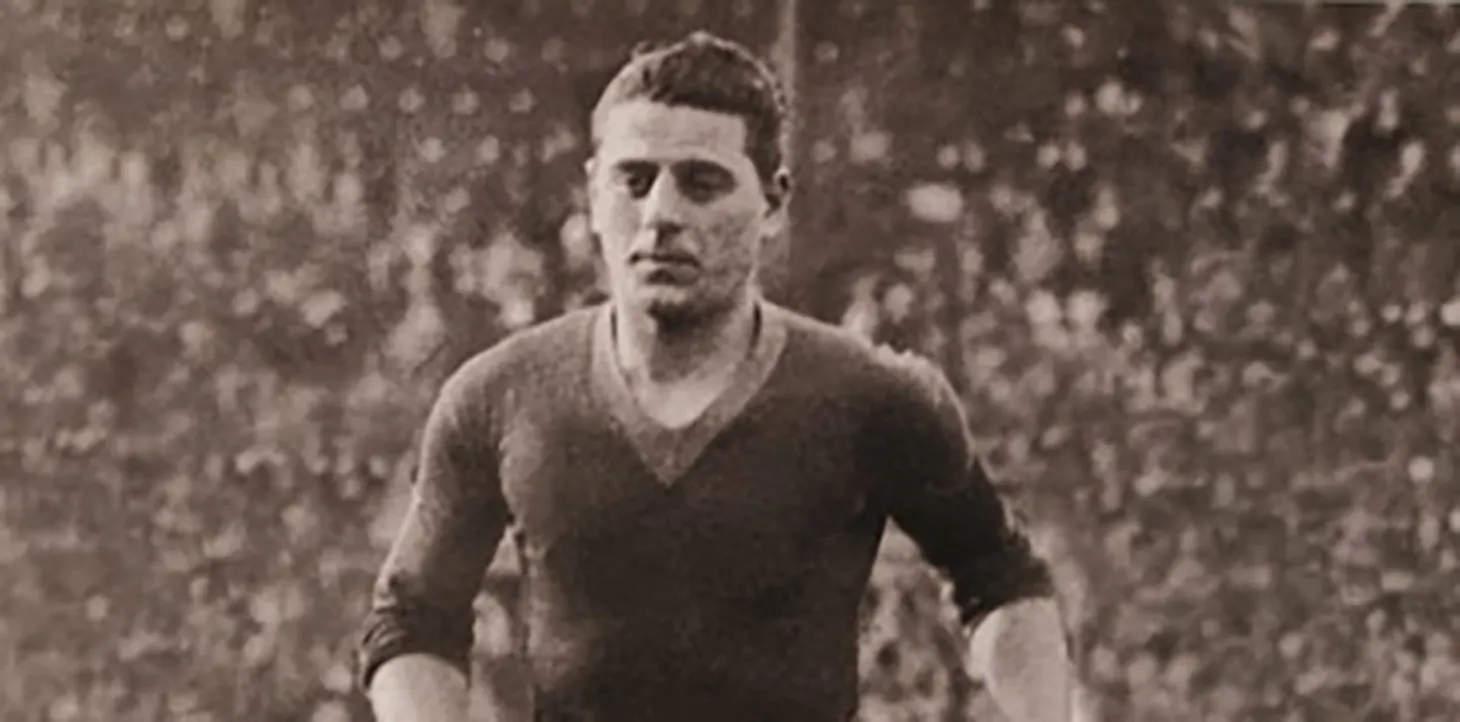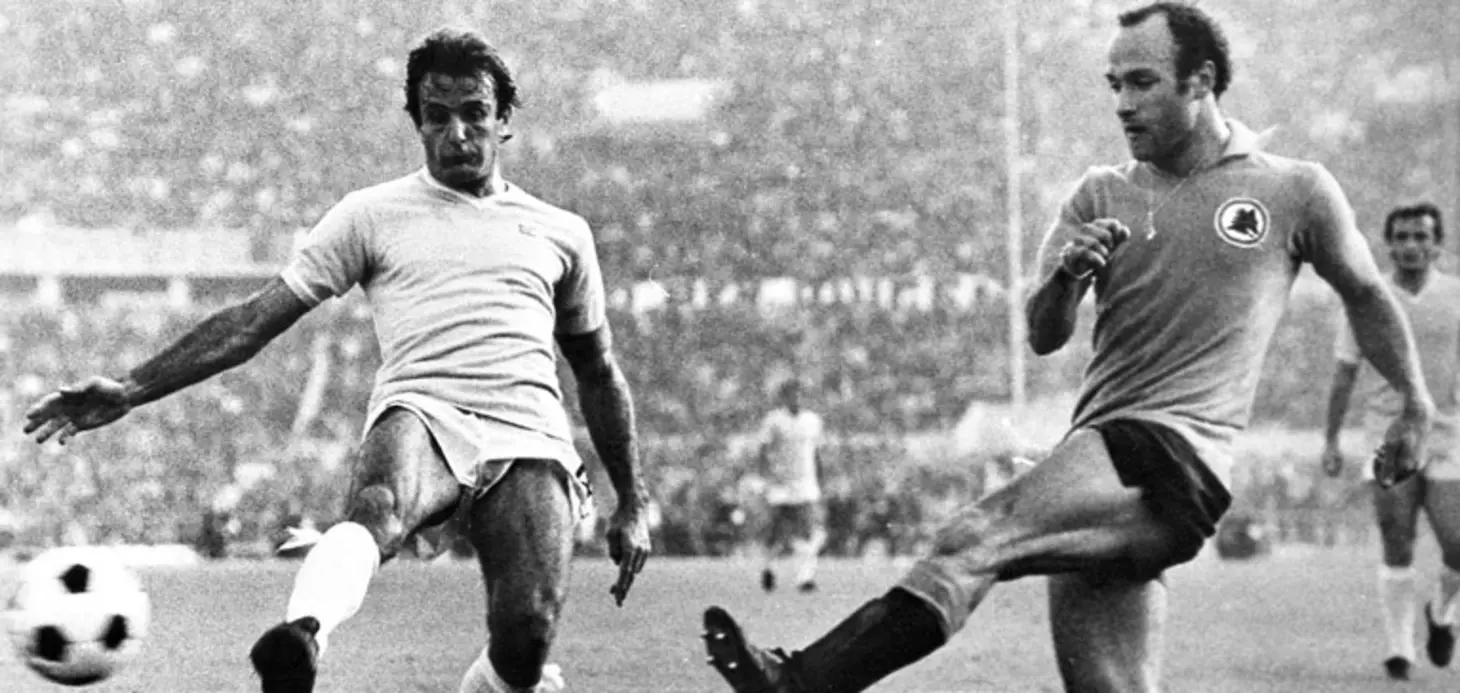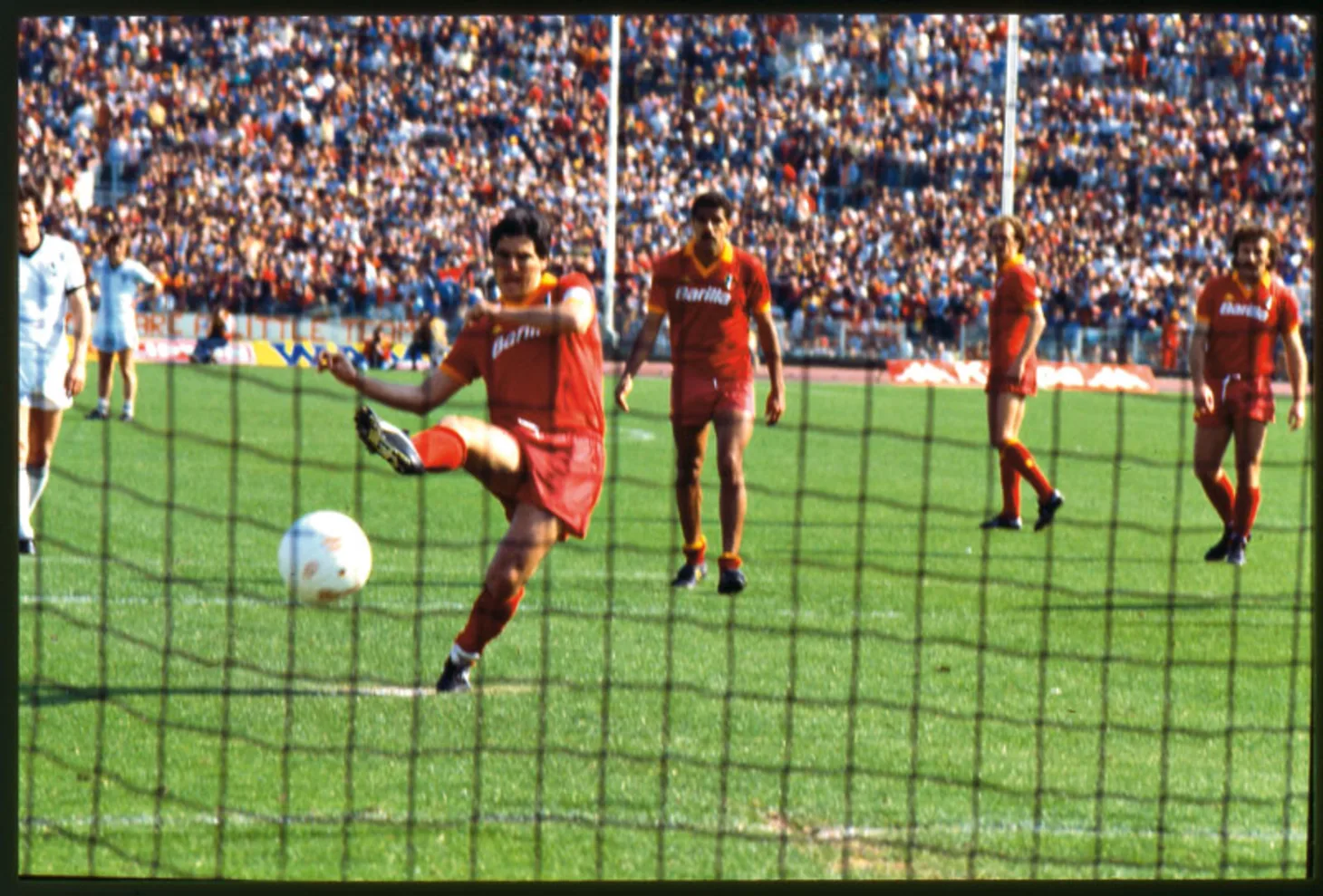The beginning
In the spring of 1927, to the great pleasure of sports lovers in Rome, Associazione Sportiva Roma was born, following the merger of three Rome-based sports clubs: Fortitudo-ProRoma, Football Club di Roma, and Alba-Audace.
As reported via the major daily newspapers of the time - including Il Messaggero and the Rome edition of the Gazzetta dello Sport - the agreement was reached on the historic night of 7 June 1927.
It was decided that Italo Foschi would become the club's first president, with Foschi having already held several meetings in the previous months among the three clubs with the aim of bringing Rome sportsmen together to create a great team capable of beating the northern sides.
The new club took on the Capitoline Wolf symbol for its crest and colours of the city - yellow and red - beloved by people of the old districts and the city suburbs.
On 22 July 1927 it was Foschi who signed the Ordine del Giorno n.1, structuring and dividing the club into three main areas: sports operations, finance and headquarters.
The Coni Cup: Ferraris and Bernardini
Foschi’s project proved to be a winning one. In the 1927-28 season, Roma won its first title: the CONI Cup, defeating Modena in the final. The star of that line-up was Attilio Ferraris, a member of the Italian national team who was born in Rome's city centre, in Borgo Pio.
Ferraris would later become a World Cup champion with the Azzurri.
After this first season, the group was joined by a legend of Roman football, Fulvio Bernardini, who would go on to become the team's guiding light for 11 seasons.
The legendary Campo Testaccio
In that early period, Campo Testaccio was the pride of Roma supporters. It would be where Roma would train between 1929 and 1940. The first and the last matches played in the legendary stadium both ended with 2-1 Roma victories, over Brescia and Livorno respectively.
A month after the move to Testaccio, another important event happened in the club’s history - the first derby between Roma and Lazio. The rivalry between the two clubs began with the match in Rondinella, near Villa Glori. That day, most of spectators were waving Roma flags and they were not disappointed – the game was decided by a goal from Rodolfo Volk.
In the 1930s, the great rivalry between Roma and Juventus began. A big match took place in 1931, when the Bianconeri were close to winning the first of their fifth consecutive Scudetto - only to be defeated 5-0 at Campo Testaccio.
This match inspired a movie, directed by Mario Bonnard, believed to be one of the first such occasions football had made such a decisive cultural impact.
The first Scudetto
Fifteen years after the club was formed, Roma finally won their first Scudetto.
Trained by Alfred Schaeffer, Roma possessed a very strong team, with a solid defense guided by goalkeeper Guido Masetti and a dangerous counter-attack but that year, the key difference was the 18 goals scored by striker Amedeo Amadei.
Born in Frascati, Amadei began his career in Roma's youth team before growing up at Atalanta. When he returned to Roma, Schaffer placed him as center forward and Amadei repaid his coach's trust with goals. Roma’s title triumph would be the first time a team from outside of the north would win the Scudetto.
Fall and rebirth
After that first success, Roma endured a hard time. The club, more than any other, suffered the consequences of the war and was left penniless with no players.
After several seasons of under-performance, Roma suffered relegation during the 1950-51 season - the only relegation in Roma’s history. The Giallorossi soon bounched back to Serie A - trained by Gipo Viani - but for 10 years the only success was a second place finish in 1954-55.
At the beginning of 1960, Roma supporters would recapture their enthusiasm through European competitions. In 1960-61, Roma tasted their first international success when the club reached the Fairs Cup final, beating first Union St. Gilloise (0-0, 4-1), Colon (2-0, 0-2, 4-1) and then Hibernian (2-2, 3-3, 6-0) on the way.
The final saw Roma, led by Luis Carniglia, take on English team, Birmingham City. In the first leg, away in England, Roma took a two-goal lead thanks to Pedro Manfredini, only for Birmingham to claw back two goals and level the tie.
The return match, played at the Olimpico, went more smoothly – with Roma winning 2-0, thanks to a Birmingham own goal and another scored by Paulo Pestrin. The star of the tournament was undoubtedly the great striker Pedro Manfredini, who scored 12 goals.
The ‘60s and two Italian cups
In the 1960s, Roma made its fans proud by winning two Italian Cups - in ‘64 and in ‘69 - and by investing in talented players such as Francisco Lojacono, Juan Alberto Schiaffino, Antonio Angelillo, Giacomo Losi and ‘Picchio’ De Sisti.
The 1969 Italian Cup victory was overseen by President Alvaro Marchini and technical coach, ‘Mago’ Helenio Herrera. The leading roles were played by ‘Ciccio’ Cordova and Fabio Capello, who many years later would become Roma coach.
The season was marred however by the unforgettable and tragic loss of Giuliano Taccola, who died following a seizure in the dressing room on 16 March 1969.
Fifty years later, the club paid tribute to Taccola's memory as they wore a special shirt in a game against SPAL.
The arrival of Liedholm
In the 1970s, Gaetano Anzalone became President and signed up new coach Nils Liedholm. The Swede put his faith in young players – in particular Francesco Rocca and Agostino Di Bartolomei.
The strategy paid off as Roma finished third during the 1974-75 season. Anzalone also made another inspired move - building the training centre ‘Fulvio Bernardini di Trigoria’, which remains Roma’s home to this day.
Viola’s Roma
The summer of 1979 was a crucial one for the club as Dino Viola became President. Under his direction, Roma reached the top of Italian football. In his first year as President, Viola oversaw - with Liedholm back at Roma - the Italian Cup final victory over Torino.
Young players like Bruno Conti, Carlo Ancelotti and the great striker Roberto Pruzzo were now making headlines. In 1980-81, the historical rivalry with Juventus raged on - the Bianconeri won the championship in controversial fashion whilst Roma doubled the Coppa Italia success.
It was during these years that the outstanding Paulo Roberto Falcao first pulled on a Roma shirt.
The second Scudetto
Roma’s long wait for a return to the title glory they first tasted in 1942 came in 1982-83. The club claimed its second Scudetto in Genova on 8 May 1983, thanks to an equalising goal from Pruzzo.
The team, put together by Liedholm, turned out to be a perfect machine: an impenetrable defence with pilars such as Tancredi, Vierchowod, Nela and Maldera, an admirable midfield with Di Bartolomei, Falcao, Ancelotti and Prohaska and an explosive attack with striker Pruzzo and winger Bruno Conti.
The city of Rome was ecstatic in victory and inspired singer-songwriter Antonello Venditti, who almost 10 years before had penned the official anthem ‘Roma Roma Roma’, to write ‘Grazie Roma’ too.
One step from European Cup glory
The season following the Scudetto win was a disappointing one from Roma - with Juventus beating the Giallorossi to the title by just two points. Even more painful for the fans was the European Cup final defeat to English champions Liverpool.
With Roma enjoying home advantage at the Stadio Olimpico, victory had been almost expected.
The team coached by Liedholm seemed unstoppable with victories over Goteborg, CSKA Sofia, Dinamo Berlin and Dundee United. Liverpool were out to spoil the party and after Puuzzo had cancelled out a much-debated opening goal by Phil Neal – with the Roma players complaining that the goalkeeper had been fouled in the build-up to the goal - the match went to penalties.
Liverpool, aided by goalkeeper Bruce Grobbelaar’s bizarre behaviour on the goalline, triumphed. It proved a great disappointment for Roma and its fans, who saw this as their biggest chance yet to be crowned the greatest team in Europe.
Roma finished the 1983-84 campaign with success over Verona in the Coppa Italia - but the European Cup defeat at the Stadio Olimpico had a major influence on Viola’s era.
Another European final
Sven Goran Eriksson, who had taken over as coach in 1984, came close to landing a third Scudetto for Roma during the 1985-86 season but his side came unstuck in the penultimate league fixture of the season against lowly Lecce.
Roma’s consolation was a sixth Coppa Italia success. The late ‘80s failed to see Roma win another trophy but the Giallorossi were cheered by the emergence of Giuseppe Giannini and the arrival of striker Rudi Voeller.
In 1991, the year of Viola’s death, under the guidance of Ottavio Bianchi, Roma reached the UEFA Cup final against Inter Milan.
Inter won the first leg 2-0 at home but despite a brave 1-0 win, thanks to a Ruggiero Rizzitelli goal, in the return leg at the Stadio Olimpico, it wasn’t enough to secure the UEFA Cup for Roma.
There was silverware for Roma during the 1990-1991 season after defeating Sampdoria in the the final of the Coppa Italia.
Franco Sensi arrives
After a brief interim joint presidency with Pietro Mezzaroma, Franco Sensi became the sole owner of the club. The new president, a great Roma fan, appointed the local coach Carlo Mazzone and invested in big name players such as Abel Balbo and Daniel Fonseca during his early years.
Whilst the results of the team did not live up to expectations, under Mazzone’s guidance a young Francesco Totti blossomed.
After experimenting for one season with Carlos Bianchi, Sensi put Roma in the hands of Zdenek Zeman, a coach reknown for being a tactical innovator. Under his stewardship, Roma bought great players such as Cafu, Vincent Candela, Damiano Tommasi and Marco Delvecchio - whilst local hero Totti was soon entrusted with the captain’s armband.
A third Scudetto
By 1999-00, Roma fans fully expected more titles and victories. Sensi decided to call upon the most successful coach in Italy at the time - Fabio Capello - and delivered top-class signings in the form of Vincenzo Montella and Hidetoshi Nakata.
But things did not truly gel until the arrival in the summer of 2000 of Argentinian striker Gabriel Batistuta, alongside fellow South Americans Walter Samuel and Emerson. Roma led the pack from start to finish and ended the season with 75 points, the most registered during an 18-team championship.
The heroes? Batistuta, with 20 goals, Montella and Totti, the real star and leader of the Roman side.
Supercoppa success
In the summer, Roma conquered Fiorentina 3-0 in the Italian Super Cup at the Stadio Olimpico before participating in the Champions League for the first time.
Capello stayed with Roma for three more seasons before moving to Juventus, Roma's historical rival. Cesare Prandelli, famous for overachieving with Parma, took his place as coach. However, serious family issues meant he was forced to resign before being replaced by former striker Rudi Voeller.
However the season was not a great one, with too many changes on the bench.
A glorious eighth Coppa Italia
In the summer of 2005, Luciano Spalletti arrived as coach and promised a new beginning for Roma. In his first year, the team set a new record with 11 consecutive victories in Serie A and ended up qualifying for the 2006-07 Champions League - after both Juventus and AC Milan were punished for the ‘Calciopoli’ scandal.
The 2006-07 season began in the worst possible way with a 3-4 defeat to Inter in the final of the Italian Super Cup but ended with another Serie A second place finish, a spirited run to the final eight in the Champions League and a glorious eighth Coppa Italia success, this time against champions Inter.
More cup success for Roma
At the start of the 2007-08 season, Roma won the Supercoppa against Inter at the San Siro, thanks to a penalty kick by Daniele De Rossi.
In the league, Totti and his teammates battled valiantly against Inter to win a fourth Scudetto but it wasn’t to be. Again Roma had to settle for the Coppa Italia, a record ninth success in the tournament. There was sad news before the start of the 2008-09 season with the loss of President Franco Sensi.
His daughter, Rosella, took over after his death.
Another European campaign
Roma felt the shock of losing Franco Sensi and despite strong foundations did not manage to achieve the same successes as the previous year, ending 7th in Serie A and exiting in the quarter finals of Coppa Italia against Inter.
The year was still memorable for the thrilling adventures in the Champions League, where Roma were unlucky to lose out to Arsenal in a quarter-final penalty shootout.
Early into the start of the 2009-10 season, Claudio Ranieri arrived as coach to replace Spalletti and the Roman coach came close to winning the club’s fourth Scudetto during an incredible debut season.
In February 2011, Ranieri was replaced by Vincenzo Montella but come May, the Giallorossi finished the season in sixth position.
An American Roma
The summer of 2011 signaled the end of Sensi’s era and the beginning of a new and ambitious chapter in the club’s history - thanks to the arrival of the new American owners, guided by James Pallotta and with Thomas DiBenedetto appointed as President.
Under American ownership, there were some immediate changes on and off the field, starting with the arrival of Luis Enrique as coach.
The Spaniard started an 'innovative' football project at the club but results were hard to come by and the coach decided it would be better if he stepped down at the end of the season. It wasn't long before the new Roma was back up and running, enthusiasm swelling once more as Zdenek Zeman took over the reins in early June 2012, while Pallotta assumed the presidency himself at the end of August.
The Czech coach's second spell at the club was short-lived, however, as he was relieved of his duties in early February 2013 with the team underachieving in the league.
Aurelio Andreazzoli briefly stepped up to take charge of the first team but his short reign didn’t live up to expectations either.
On 12 June 2013 Rudi Garcia was named the new Giallorossi coach - the first Frenchman to sit in the Roma dugout. Garcia immediately struck the right note with players and fans, guiding the Giallorossi to 10 straight Serie A victories during a brilliant debut season that ended with second place and qualification to the Champions League group stage.
Roma again finished second during Garcia’s second season, with qualification for Champions League secured for the second consecutive season.
In January 2016, Garcia left the club and was replaced with Luciano Spalletti, who had helped the Giallorossi to their most recent silverware in his first spell with the club. Spalletti enjoyed two successful seasons with Roma before departing in May of 2017, replaced shortly thereafter with former Giallorossi player Eusebio Di Francesco.
Di Francesco enjoyed a successful first season with Roma, reaching the Champions League semi-final before leaving the club in March of 2019.
Following a caretaker stint from the returning Ranieri, in the summer of 2019, Paulo Fonseca became the first Portuguese head coach of the Giallorossi.
A multiple title-winner in Ukraine with Shakhtar Donetsk, Fonseca guided the side to a fifth place finish in the disrupted 2019-20 Serie A season - as the club went out in the last-16 of the Europa League.
A New Era Begins
In August 2020, the club's ownership changed - as The Friedkin Group completed a takeover of the club.
American businessman Dan Friedkin became the club's 25th chairman, pledging to implement an "ambitious and disciplined business plan" in the Italian capital.
"We are delighted to join the AS Roma family,” he added.
“As one fan wrote recently, ‘Take our iconic club and make it one of the greatest names in world football’. We intend to do just that."
During the first year of their ownership, the men's team reached the semi-fiinals of the Europa League - 30 years on from the last time they managed it, against Brondby back in 1991. But a seventh place finish in the league in 2021 led to a change in coach - with the world-renowned Jose Mourinho hired to oversee the ambitious plans the club have in place.
On the women's side, meanwhile, the team won the first piece of silverware in their history - lifting the Coppa Italia after victories over both Juventus (semi-finals) and AC Milan (the final).
A year later, the men's team was delivering on the promises of both the ownership and the head coach - as club captain Lorenzo Pellegrini lifted the UEFA Europa Conference League.
Nicolo Zaniolo scored the only goal of the game against Dutch side Feyenoord, as the Giallorosse won a first trophy in 13 years, and a first European trophy for 61 years.
"It is one thing to win when everyone expects it, when you made the investments to win, but it's quite another to win when something feels immortal, that feels truly special," Mourinho said afterwards.
"This [victory] remains in the history of Roma, but also mine."
A day later, hundreds of thousands of fans filled the streets around Rome as the players and staff celebrated an iconic triumph.
The women's team was also making progress of their own: qualifying for the Champions League for the first time in their history, after a stunning second half of the league campaign.

 Tickets
Tickets
 Shop
Shop














































